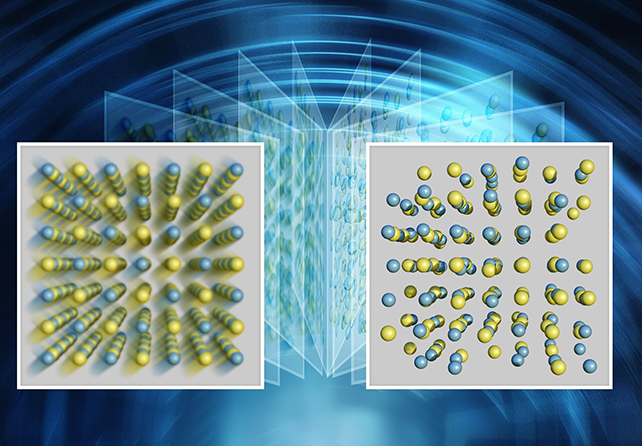
Scientists at Columbia University in New York have used an ultrafast camera to photograph what is called dynamic disorder — chaotic movement atoms.
Back in 2023, scientists presented a camera with a shutter speed of just a trillionth of a second, which is 250 million times faster than traditional digital cameras, which open the shutter for about one four-thousandth of a second to improve a photo. This allows the ultra-fast camera to capture photos chaotic movement atoms in a material under the influence of vibration or temperature changes. Scientists do not yet fully understand the nature of this phenomenon, but it is important for determining the properties and reactions of various materials. The researchers call their invention the variable gate atomic pair distribution function, or vsPDF for short.
Only with this new vsPDF tool can we truly see this side of materials Thanks to this technique, we will be able to observe the material and see which atoms are involved in this chaotic movement and which are left out», — explains Columbia University materials scientist Simon Billing.

The high shutter opening and closing speeds allow for extremely sharp images, which is very effective when imaging moving objects such as atoms that oscillate very rapidly. VsPDF uses neutrons to measure the position of atoms. Neutrons entering and passing through a material can be tracked to measure atomic structures. Changes in energy levels are equivalent to shutter speed adjustments.
Using the camera, the scientists studied the properties of germanium telluride, which is widely used to convert excess heat into electricity or electricity into cooling.
The images taken by the camera demonstrated that germanium telluride mostly retains its crystal structure at all temperatures. However, at higher temperatures in this article there is a more chaotic movement of atoms, and the energy of their movement is converted into heat according to the gradient that coincides with the direction spontaneous electrical polarization of the material
Using this camera will help scientists better understand the thermoelectric properties of such materials and, on this basis, create devices, for example, to power devices in the absence of sunlight However, much work is still needed to make vsPDF ready for widespread use as a testing method.
«Smallest known particle»: CERN physicists detect toponium signal in Large Hadron Collider
The results of the study are published in the journal Nature
Source: ScienceAlert

Spelling error report
The following text will be sent to our editors: